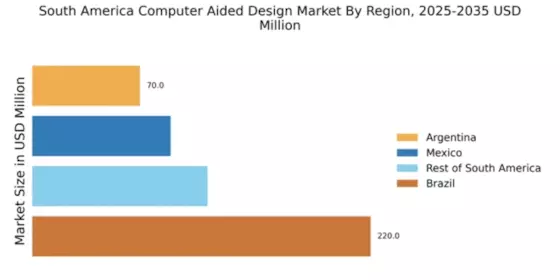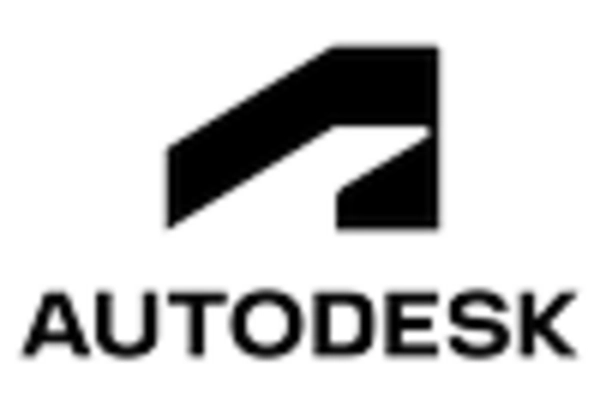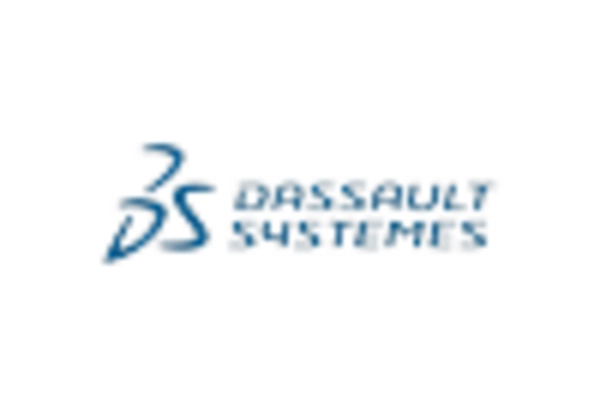The competitive dynamics within the computer aided-design market in South America are characterized by a blend of innovation, strategic partnerships, and regional expansion. Key growth drivers include the increasing demand for advanced design solutions across various industries, such as architecture, engineering, and manufacturing. Major players like Autodesk Inc (US), Dassault Systèmes SE (FR), and Siemens AG (DE) are strategically positioned to leverage their technological expertise and extensive product portfolios. Autodesk Inc (US) focuses on cloud-based solutions and has been enhancing its software capabilities to cater to the evolving needs of designers and engineers. Meanwhile, Dassault Systèmes SE (FR) emphasizes digital transformation through its 3DExperience platform, which integrates design, simulation, and collaboration tools. Siemens AG (DE) is actively pursuing regional expansion, particularly in Brazil, to tap into the growing market for industrial design solutions, thereby shaping a competitive environment that is increasingly collaborative and technology-driven.
Key business tactics employed by these companies include localizing manufacturing and optimizing supply chains to enhance operational efficiency. The market structure appears moderately fragmented, with several players vying for market share while also collaborating on various initiatives. This collective influence of key players fosters a competitive landscape that encourages innovation and responsiveness to market demands.
In October 2025, Autodesk Inc (US) announced a strategic partnership with a leading Brazilian architecture firm to develop customized design solutions tailored to local market needs. This collaboration is expected to enhance Autodesk's presence in South America and provide localized support, thereby strengthening its competitive position. The strategic importance of this partnership lies in its potential to drive user engagement and foster innovation in design practices within the region.
In September 2025, Dassault Systèmes SE (FR) launched a new version of its 3DExperience platform, incorporating advanced AI capabilities to streamline design processes. This move is significant as it positions the company at the forefront of digital transformation, allowing users to leverage AI for enhanced design efficiency and accuracy. The integration of AI into their offerings may attract a broader customer base seeking cutting-edge solutions.
In August 2025, Siemens AG (DE) expanded its operations in Brazil by establishing a new research and development center focused on sustainable design practices. This initiative underscores Siemens' commitment to sustainability and innovation, aligning with global trends towards environmentally friendly design solutions. The establishment of this center is likely to enhance Siemens' competitive edge by fostering local talent and addressing specific market needs.
As of November 2025, current trends defining competition in the computer aided-design market include a strong emphasis on digitalization, sustainability, and the integration of AI technologies. Strategic alliances are increasingly shaping the landscape, enabling companies to pool resources and expertise to drive innovation. Looking ahead, competitive differentiation is expected to evolve, with a shift from price-based competition to a focus on technological advancement, innovation, and supply chain reliability. This transition may redefine how companies position themselves in the market, emphasizing the importance of delivering superior value through advanced design solutions.


















Leave a Comment